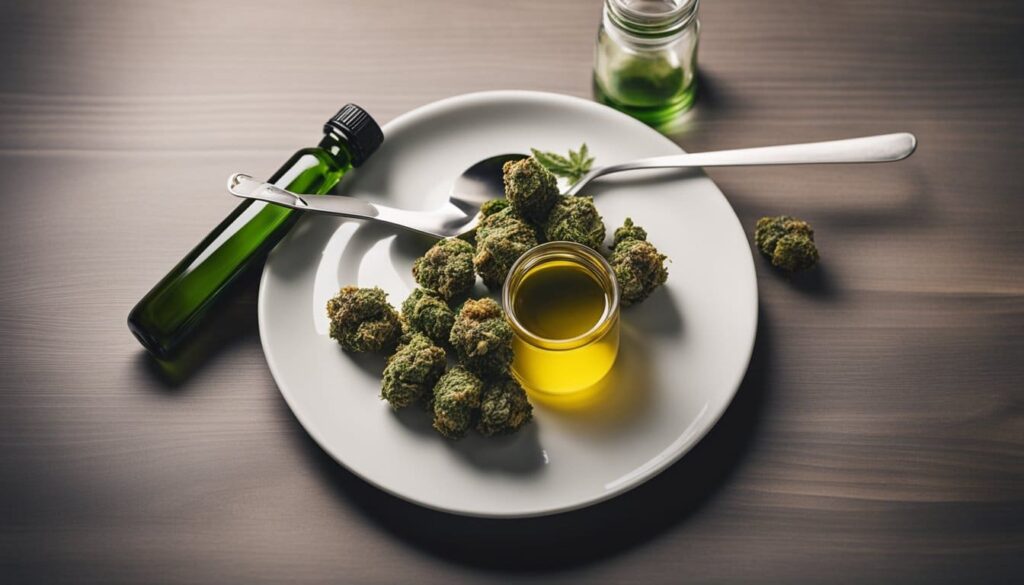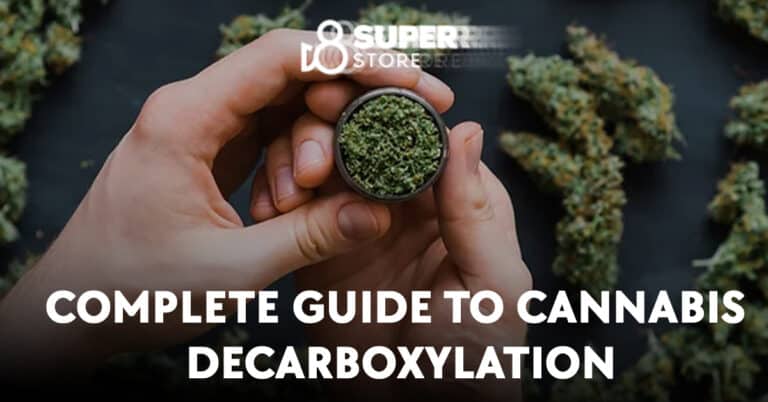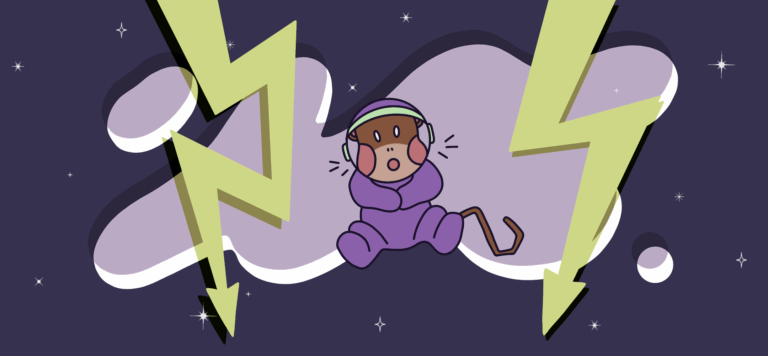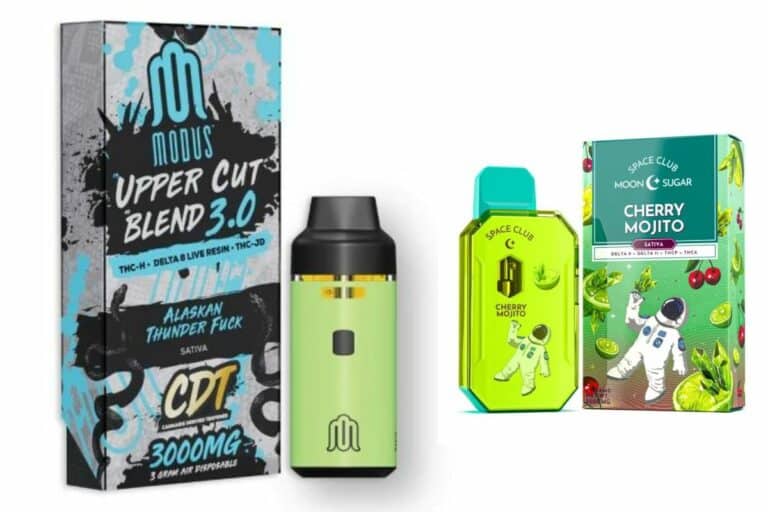Can You Take Marijuana Edibles on an Empty Stomach: Risks and Effects
Wondering about trying cannabis treats? Pondering if munching them without eating anything else first is wise? Here’s what you need to know: Your experience with these edibles changes a lot depending on how fast your body processes food, the strength of the edible, and whether you’ve eaten. Digging into them on an empty stomach could mean feeling the buzz sooner because your body snaps up those cannabinoids super quickly. Hang tight to discover if this strategy is smart. Why hold back? The insights you gain here might totally flip the script on how you enjoy these tasty bites!

However, the experience may also be more intense and potentially uncomfortable, as there’s nothing to buffer the absorption of THC. My advice to those new to cannabis edibles is often to start with a low dose and go slow, especially if the stomach is empty. This is because the psychoactive effects of THC, the primary psychoactive cannabinoid in cannabis, can be unpredictable and the experience can differ widely from that of smoking or vaping cannabis.
In my experience, and echoed by some research, consuming edibles with food, particularly fatty foods, can enhance the absorption of THC and possibly lead to a smoother experience. It’s also worth noting that while the effects may take longer to kick in with a full stomach, they can last longer compared to taking them on an empty stomach. Therefore, for those who are considering using cannabis edibles, understanding how consumption on an empty versus a full stomach affects the experience is crucial for a safe and enjoyable experience.
Understanding Edibles and Their Effects
Marijuana edibles are an increasingly popular form of cannabis consumption due to their discretion and variety. As I explain their effects on the body, it will become clear that considerations such as type and active compounds play crucial roles in experiencing the full impact of edibles.
Different Types of Edibles
Cannabis edibles come in many forms, ranging from baked goods and candies to beverages and tinctures. The choice of an edible affects not only the onset and duration of the effects but also how the body processes the THC and CBD it contains. Edibles pass through the digestive system, where they are metabolized by the liver before entering the bloodstream, which can delay the onset of effects compared to smoking or vaping.
THC vs. CBD in Edibles
Edibles can contain THC (tetrahydrocannabinol), CBD (cannabidiol), or a combination of both. THC is the primary psychoactive component that provides a high, while CBD is prized for its non-psychoactive effects which some users report can alleviate pain and anxiety. The ratio of THC to CBD in an edible determines the balance between the psychoactive effects and the potential therapeutic benefits.
The Science of Edibles on the Body
When I consume an edible on an empty stomach, the active cannabinoids, mainly THC and CBD, are absorbed through my digestive tract. THC is then converted in the liver to a more potent form, which can lead to a more intense and prolonged high. The metabolized compounds are then released into my bloodstream and eventually reach the brain, interacting with the cannabinoid receptors. Effects can be felt within 30 minutes to two hours, although this can vary widely based on my body and the specific edible consumed.
Effects of Consuming Edibles on an Empty Stomach
When I consume edibles on an empty stomach, I notice the onset of effects is often quicker and more potent than when I’ve eaten beforehand.
Intensity and Duration of Effects
Consuming edibles on an empty stomach can lead to a more intense high. Without food to slow the digestion process, the active compounds in cannabis, particularly THC, are absorbed more quickly. This can result in a stronger and sometimes more unpredictable experience. I’ve observed the following specifics:
- Onset: The effects often set in quicker, sometimes within 30 to 60 minutes.
- Intensity: The lack of food can amplify the potency, leading to a stronger high.
- Duration: While the initial effects can be impactful, they may not last as long as they would with food in my system.
Risks of Negative Side Effects
The risk of negative side effects is something I take seriously. An empty stomach can exacerbate unwanted reactions such as:
- Nausea: Without anything to absorb the cannabis, stomach discomfort can occur.
- Anxiety and Paranoia: The intense high might lead to increased feelings of unease or fear.
- Dizziness: Rapid absorption can cause light-headedness or dizziness.
I’m careful to assess my tolerance and surroundings when I decide to consume edibles without eating, as these factors contribute to the overall experience and safety.
Proper Dosing and Tolerance

When I discuss proper dosing and tolerance of marijuana edibles, two critical factors come into play: finding the right dose that aligns with my individual needs and understanding how my tolerance levels can influence dosing over time.
Finding the Right Dose
To start, I consider a low dose of THC in edibles to be in the range of 1-5 milligrams. This microdosing approach is often recommended for beginners, adhering to the “start low and go slow” philosophy. But finding my ideal dose requires paying close attention to how my body reacts. I often record my experiences in a journal, noting how different doses affect me. A moderate dose might range between 5-15 milligrams, while a high dose may exceed 20 milligrams. Ingesting edibles on an empty stomach can lead to more intense effects, as there’s nothing to slow the absorption of THC.
Tolerance Levels and Adjustments
My THC tolerance is unique to me and can change over time. For instance, if I consume edibles regularly, I might find that I require higher doses to achieve the same effects—a sign of increased tolerance. To manage tolerance, I sometimes take tolerance breaks, or adjust my dosage incrementally. It is essential to remember that tolerance is not static and must be assessed continually to maintain responsible use. A very high tolerance could lead to consuming large amounts of THC, which isn’t always necessary or beneficial. It’s about understanding and respecting my body’s responses and adjusting dosing accordingly.
Comparison with Other Consumption Methods
In considering marijuana edibles, it’s crucial to understand how they differ significantly from other methods of consumption like smoking and mixing with alcohol. Each route of administration affects the body uniquely, with variances in onset, intensity, and duration of effects.
Edibles vs. Smoking
When I consume edibles, the active compounds in cannabis, such as THC, enter my bloodstream through my digestive system. This process is slower compared to smoking, where I would inhale smoke into my lungs for a quicker absorption into the bloodstream. The delayed onset of effects with edibles can range from 30 minutes to 2 hours, while smoking can evoke effects almost immediately.
- Onset: Edibles (30 min – 2 hrs) vs. Smoking (within minutes)
- Duration: Edibles (4 – 8 hrs) vs. Smoking (1 – 3 hrs)
Additionally, the impact of edibles may feel more intense and last longer since THC is metabolized into a more potent form in the liver. In contrast, smoking offers a more predictable and controllable experience, as I can stop inhaling once I’ve reached the desired effect. Also, smoking may pose risks to lung health, which is not a concern when I eat edibles.
Edibles and Alcohol
Combining edibles with alcohol can modify the cannabis experience. Alcohol may potentially increase THC absorption, which can amplify the effects of edibles. However, taking edibles on an empty stomach may lead to a quicker and possibly overwhelming onset of effects. When I ingest edibles after consuming alcohol, it’s critical to be aware that my judgment and coordination might be significantly impaired.
- Effects: Potentially amplified when combined
- Risk: Increased impairment of judgment and coordination
Therefore, when considering whether to eat an edible on an empty stomach or to mix it with alcohol, it’s imperative to factor in these potential changes in effects and the risks associated with impaired cognitive and motor functions. I always take into account these differences and approach each consumption method with appropriate caution.
Potential Health Implications
When discussing the health implications of taking marijuana edibles, especially on an empty stomach, it’s crucial to consider both the potential benefits and the possible health risks. This evaluation is vital for patients, healthcare providers, and any individual considering the use of cannabis for medicinal or recreational purposes.
Benefits of Cannabis Edibles
Cannabis edibles have been recognized for their role in pain relief and as an alternative medication for various medical conditions. I find it significant that when consumed, the active compounds, like THC, are processed differently than they are when smoked or vaporized. This results in a more prolonged and potentially more intense effect, which can be beneficial for patients requiring long-lasting pain management. Ingesting cannabis on an empty stomach could lead to faster absorption and more immediate relief, although this varies by individual.
Possible Health Risks
However, the consumption of cannabis edibles, particularly on an empty stomach, carries possible health risks. My research indicates that the intensity of effects, including adverse effects like upset stomach or anxiety, can be amplified due to faster absorption rates. Patients and recreational users may experience unexpected potency, potentially leading to overconsumption. Health risks are also a concern for those with fat malabsorption issues or impaired gastrointestinal function, as this can alter the bioavailability of THC. It’s crucial for users to consult with a healthcare provider before using edibles, especially if they have underlying health conditions or are on other medications.
User Experience and Expectations
When discussing the consumption of marijuana edibles, it’s essential to consider both the physiological effects and the psychological aspect of expectations. Your experience and the outcomes you anticipate can significantly influence your approach and reaction to these substances.
The Edibles Experience
I understand that consuming edibles, like gummies, on an empty stomach can lead to more rapid absorption and potentially more intense effects. Unlike smoking or vaping, where the THC enters your bloodstream quickly through your lungs, edibles must first pass through your stomach and liver. This means that if I take an edible on an empty stomach, the onset might be faster compared to taking it after a meal. However, there’s a caveat. The experience can be rather unpredictable, and while some might appreciate the quick onset, it may lead to an uncomfortably intense high or an “edibles hangover,” which is a lingering feeling of lethargy or fogginess.
Setting Realistic Expectations
I find it crucial to set realistic expectations about the potency and longer-lasting effects of weed edibles. If I haven’t eaten, the effects are likely to be felt sooner and may be more potent. But with greater potency comes the likelihood of an overwhelming experience, especially if I am not accustomed to the effects of THC. Therefore, I make it a point to start with a low dose and wait for at least one to two hours to gauge the impact before considering whether to consume more. Understanding that the effects of edibles, even in small doses, can last much longer than inhaled forms of cannabis helps me prepare for the duration of the experience and avoid taking additional doses prematurely.
Safety and Legal Considerations

When I consume marijuana edibles, several safety protocols and legal frameworks must be considered. These ensure that I am not only using the product in a way that minimizes health risks but also in a manner compliant with the law.
Safety Guidelines and Best Practices
For safety, I follow a set of best practices that include starting with a low dose, particularly if I’m new to edibles or if my tolerance is unknown. This approach mitigates any potential overconsumption due to the delayed onset of effects, which is a known characteristic of edible cannabis products. Moreover, consuming marijuana edibles on a full stomach is advisable; this can moderate the intensity and rate of absorption into my bloodstream. Importantly, I always keep the edibles out of reach of children and pets, and I ensure they are clearly labeled to avoid accidental consumption, as highlighted in a review on the safety and quality assurance systems of cannabis edibles.
Legal Status and DEA Regulations
In terms of legal considerations, the legal status of marijuana varies by location. Federally, it is classified as a Schedule I controlled substance by the DEA, indicating no currently accepted medical use and a high potential for abuse. This classification means that the production, distribution, and possession of marijuana are subject to federal criminal penalties. On a state level, however, the legal status can differ, with some states allowing medical and recreational use. It is my responsibility to be informed of and adhere to the regulations in my jurisdiction as described in the DEA regulations and to be aware that traveling across state lines with marijuana is a federal offense.
Types of Edibles and Their Properties
Marijuana edibles come in various forms, each exhibiting unique characteristics that influence how they interact with the body. Understanding these properties can guide users on how to consume them, particularly in relation to whether one has eaten.
Solid Edibles: Gummies, Brownies, Cookies
Gummies: These are often gelatin-based chews infused with cannabis extract. Their effects can be influenced by stomach contents due to absorption via the digestive system.
- Onset time: May vary if taken on an empty stomach versus with food
- Duration of effects: Long-lasting, potentially several hours
Brownies/Cookies: Baked goods are a popular choice for infusing cannabis. The presence of fats in these edibles can aid in the absorption of THC, the psychoactive component of cannabis.
- Flavorful choice: Masks the plant taste of cannabis
- Interaction with other foods: Can affect the release and absorption rate of THC
Liquid Edibles: Tinctures, Drinks
Tinctures: Alcohol or oil-based cannabis extracts that are typically administered sublingually (under the tongue). This method bypasses the digestive system and may result in quicker onset.
- Dosage control: Dropper application allows for precise dosing
- Absorption: Sublingual application leads to faster absorption than ingestible solids
Drinks: Cannabis-infused beverages range from teas to sodas. The cannabinoids in these drinks must pass through the digestive system before entering the bloodstream.
- Variety: Comes in multiple flavors and potencies
- Onset and duration: Generally have a delayed onset but prolonged effect compared to smoking or vaping
Factors Influencing Edible Absorption

When consuming cannabis edibles, the absorption rate and overall effect are influenced by multiple factors related to the body’s digestive system and substance interactions. Understanding these can help individuals gauge how edibles might affect them.
Digestive Tract and Metabolism
The digestive tract plays a crucial role in the absorption of cannabis edibles. When I ingest an edible, it first enters my stomach where gastric emptying begins the digestion process, slowly releasing the edible’s compounds into my small intestine. This is where the majority of absorption occurs. My metabolism—the rate at which my body converts food into energy—directly impacts how quickly the effects of the edible begin. For instance, a faster metabolism can lead to quicker onset of effects.
Interactions with Food and Drink
Interactions with food and drink can significantly alter the absorption of cannabis edibles. Eating edibles with high-fat foods can enhance their absorption because THC, the psychoactive component in cannabis, is fat-soluble. This is why, when I eat a cannabis edible on an empty stomach, I might experience faster, but potentially less consistent effects. The presence of food, particularly fats, can also stimulate my gallbladder to release bile acids, which aid in the absorption of fat-soluble substances. My weight could also influence absorption, as it may alter the distribution of cannabinoids in my body.
Aftereffects and Recovery
When consuming marijuana edibles, it’s essential to understand the potential aftereffects and methods for recovery should the experience become more intense than anticipated. I’ll discuss how to handle a potent high and what to expect regarding any hangover-like symptoms.
Dealing with an Intense High
An intense high from marijuana edibles can be surprisingly strong, especially if taken on an empty stomach. This is because the absence of food can lead to a faster absorption rate, which might cause effects to appear more rapidly and potently. If I find myself experiencing uncomfortable symptoms such as sweating or a rapid heartbeat, the first step is to remain calm and remind myself that these feelings will pass. It usually takes about 90 to 120 minutes for the high to peak, depending on my body chemistry and weight.
- To relax, I focus on deep breathing or engage in activities that promote wellness, like listening to soothing music or taking a warm bath.
- Staying hydrated is crucial, so I make sure to drink plenty of water.
- If I feel overwhelmed, I might seek out a comfortable and safe space where I can lie down and rest until the intensity diminishes.
Edibles and Hangover Symptoms
While the term overdose is typically associated with much more severe consequences in the context of other substances, consuming too many marijuana edibles can result in next-day symptoms similar to a hangover. These might include feelings of fatigue, grogginess, or a lingering sense of being unwell. My strategy for recovery usually entails:
- Education about proper dosage is key to preventing these symptoms in the future.
- Should I wake up feeling less than optimal, I prioritize a meal with balanced nutrients to help stabilize my body’s needs.
- Light exercise can help expedite recovery, as can ensuring I get plenty of rest to allow my body to recuperate.
By understanding and respecting my limits, I can enjoy marijuana edibles while minimizing negative aftereffects and enhancing my overall experience.
Educational Insights for Consumers

In my experience, understanding how to consume cannabis edibles safely is crucial. I will offer key educational insights derived from expert advice and research, aiming to equip consumers with the necessary information.
The Importance of Patient Education
When it comes to consuming cannabis edibles, especially on an empty stomach, being informed is paramount. Due to the delayed onset of effects that edibles have, compared to inhaled cannabis, there’s a strong emphasis on the “start low, go slow” guideline. Experts in the field agree that this approach minimizes the risk of discomfort and overconsumption.
- Start Low: Based on expert recommendations, a minimal dose for beginners is key. Beginners are advised to start with a dosage that might be as low as 2-3 mg of inhaled THC, and 5 mg if ingested.
- Go Slow: The effects of edibles take longer to manifest, often leading to a more intense and prolonged experience than inhaled cannabis. It is advised by health professionals to wait at least two hours before considering an additional dose after ingesting an edible.
Educational materials like a guide to edibles should clear up misconceptions and provide evidence-based advice. Taking edibles on an empty stomach can lead to faster absorption and potentially more intense effects, which may not always be desirable or comfortable. This underscores the importance of consuming food before taking edibles, as well as having a proper understanding of potential outcomes.
My aim here is to present these insights not to deter from the use of edibles but to encourage a more informed and respectful approach to their consumption. Knowledge is power, and in the realm of cannabis edibles, it’s a critical safety net.
Frequently Asked Questions
In this section, I will address common inquiries about taking marijuana edibles on an empty stomach, including its effects, onset times, and important safety tips.
What are the effects of consuming edibles on an empty stomach?
Taking edibles without eating beforehand can lead to a faster and possibly more intense onset of effects. The body metabolizes THC more quickly, which might result in a stronger high that could be overwhelming for some individuals.
How does fasting impact the experience of ingesting edibles?
Fasting before consuming edibles can significantly affect how the body processes THC. With no other food to digest, THC gets absorbed swiftly, potentially leading to a more potent and faster-acting experience.
Are there differences between Delta 8 and Delta 9 edibles when taken without prior food intake?
Delta 8 and Delta 9 are different forms of THC with distinct properties. An empty stomach may heighten the psychoactive experience with Delta 9 edibles more so than with Delta 8. However, individual reactions can vary based on personal tolerance and the specific products used.
What is the onset time for the effects of gummy edibles when the stomach is empty?
Gummy edibles typically begin to take effect within 30 to 60 minutes when consumed on an empty stomach. This is faster than the onset time when edibles are ingested with food, which can take up to 2 hours.
Are there any tips to enhance the potency of edibles?
To enhance the potency of edibles, some users consume them on an empty stomach or choose products with a higher concentration of THC. However, this should be approached with caution to avoid overconsumption and adverse effects.
What safety considerations should one keep in mind when consuming edibles before a flight?
Before a flight, it’s important to consider the duration of your trip and the legalities of your destination. Be mindful that the effects of edibles, especially on an empty stomach, can be unpredictable and may cause discomfort during travel. It’s crucial to understand your reaction to edibles and to consume them responsibly.







